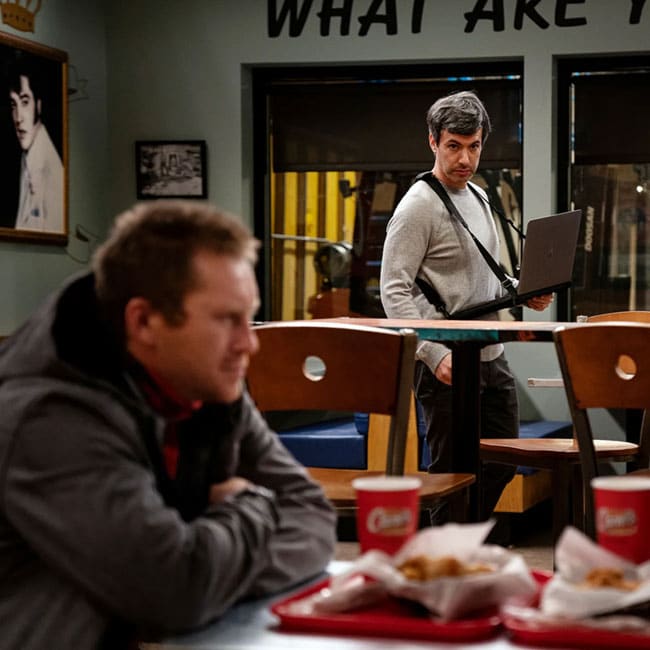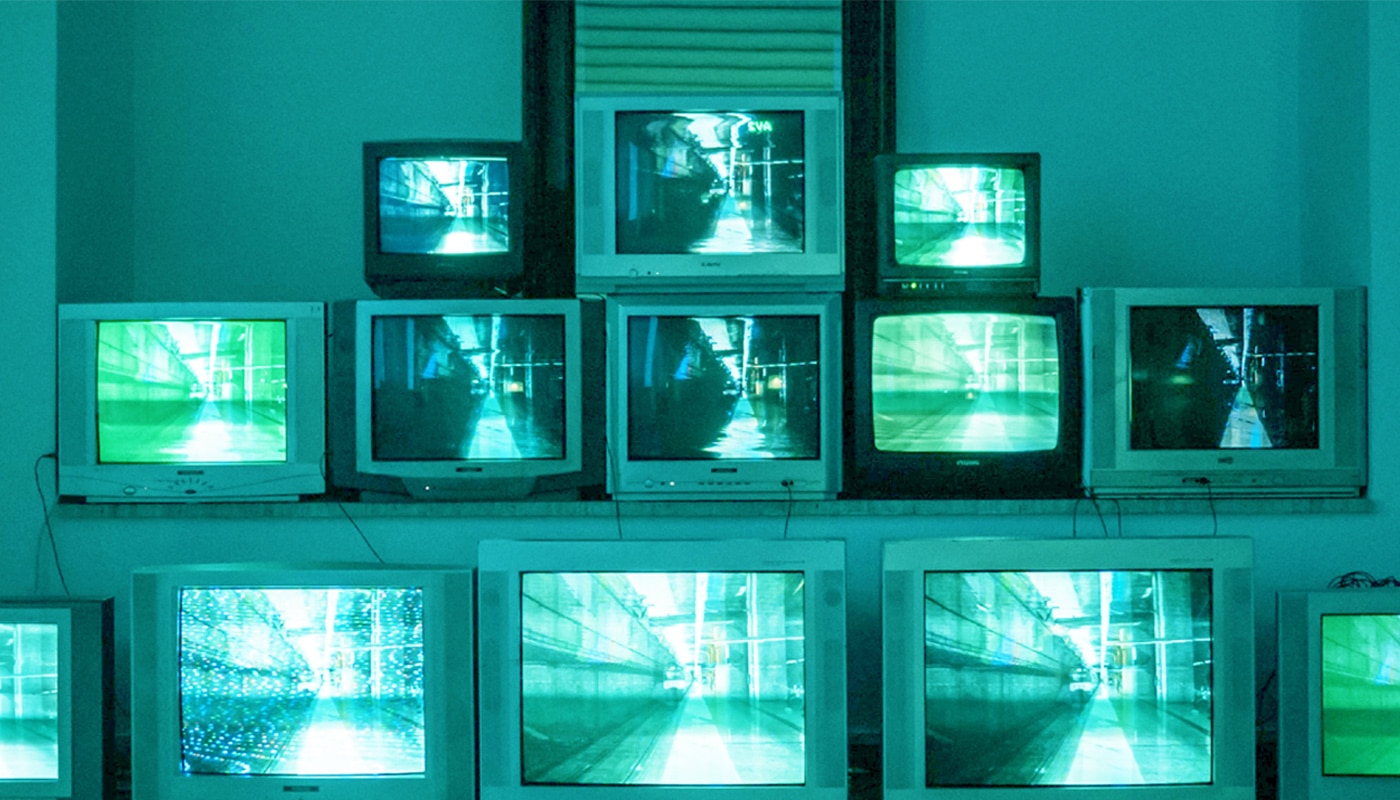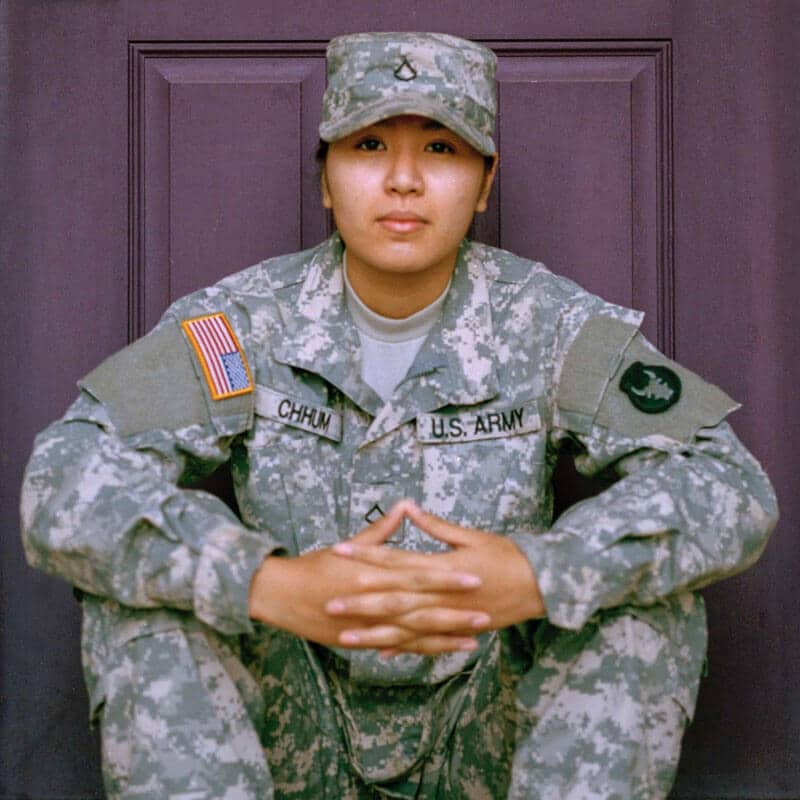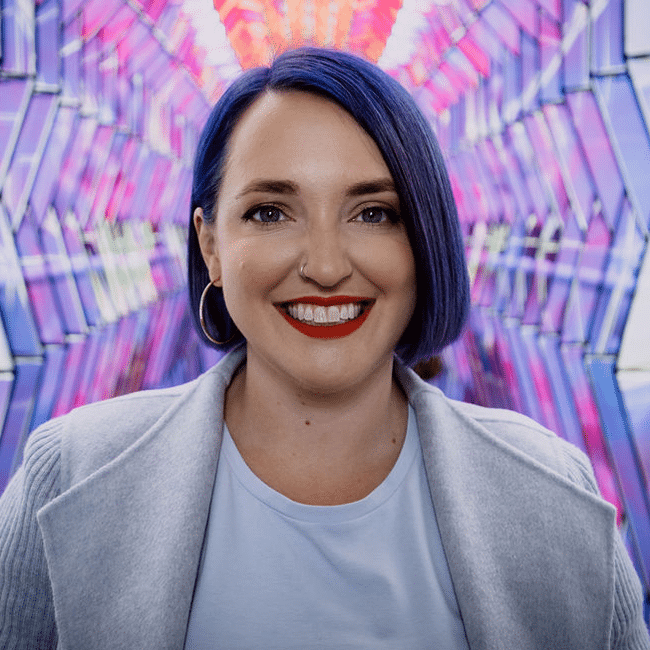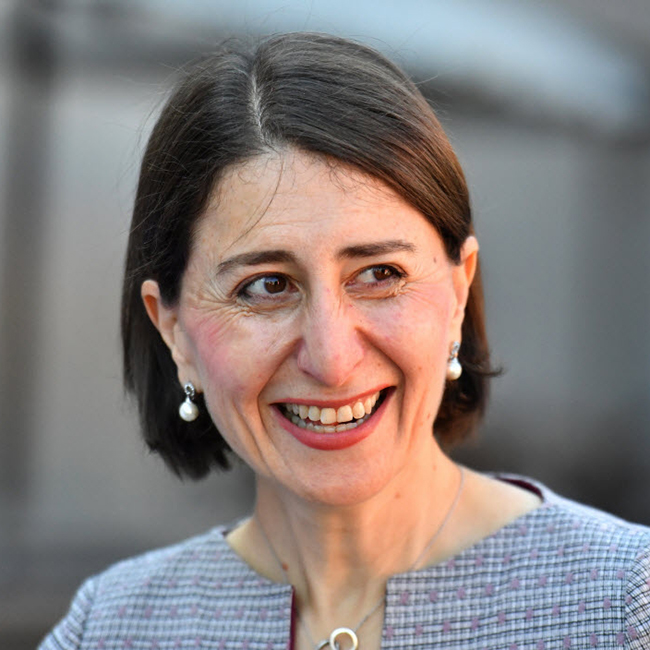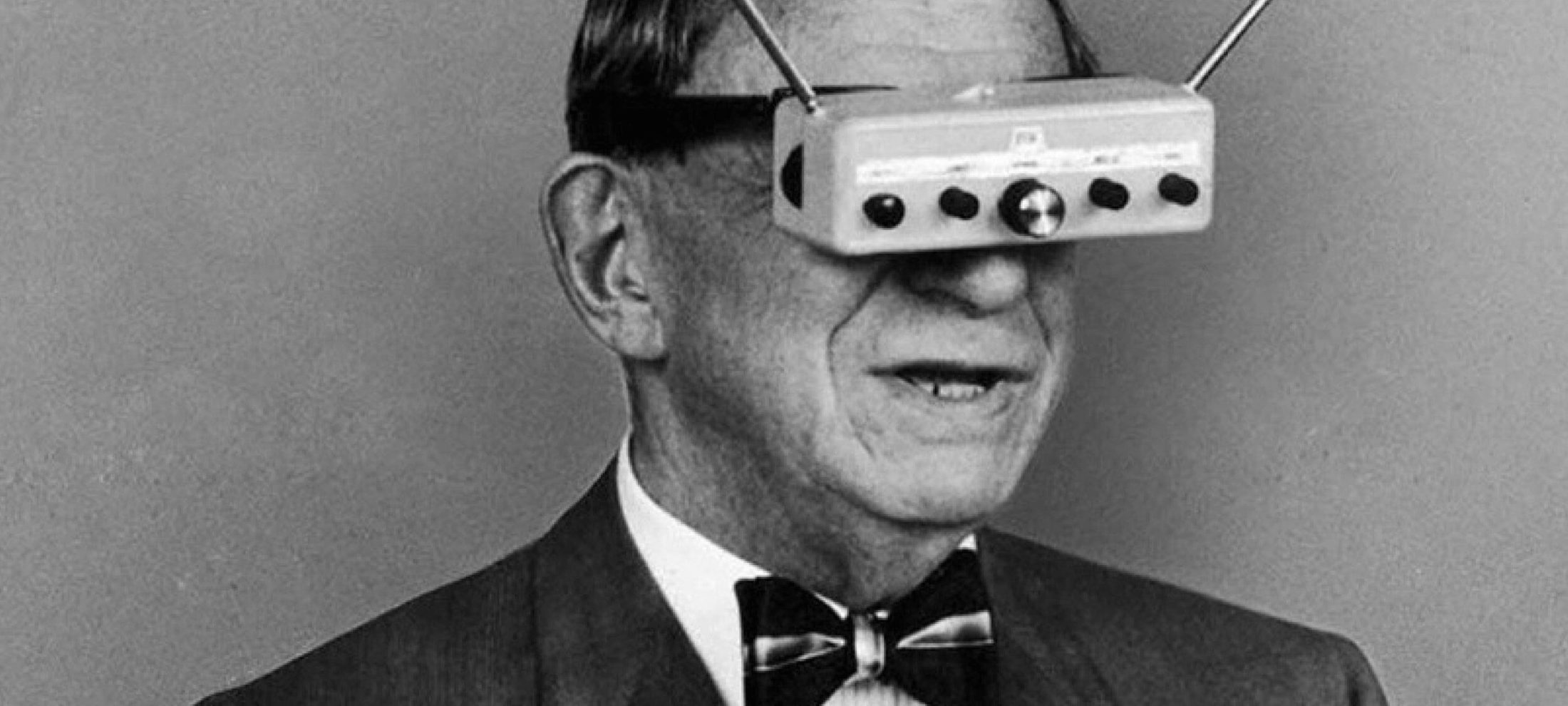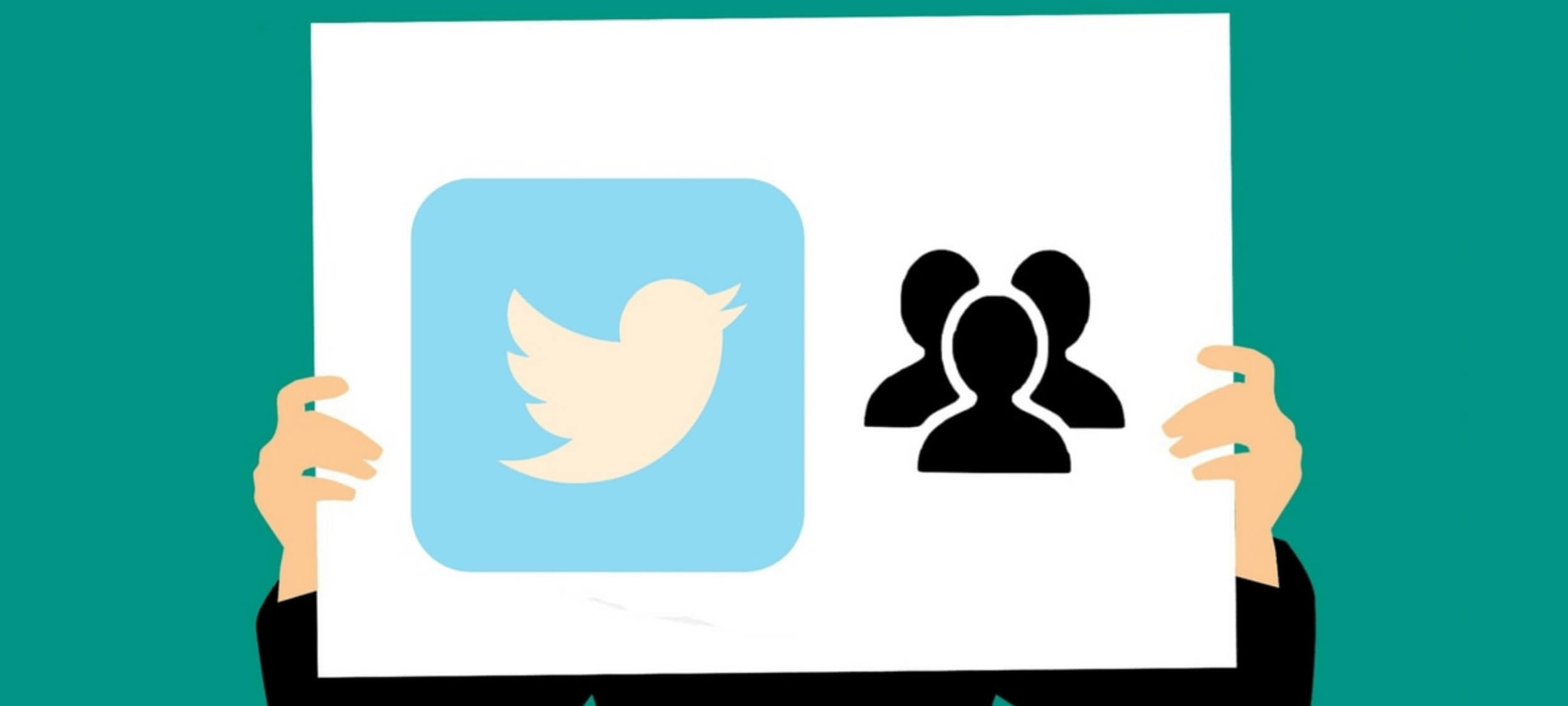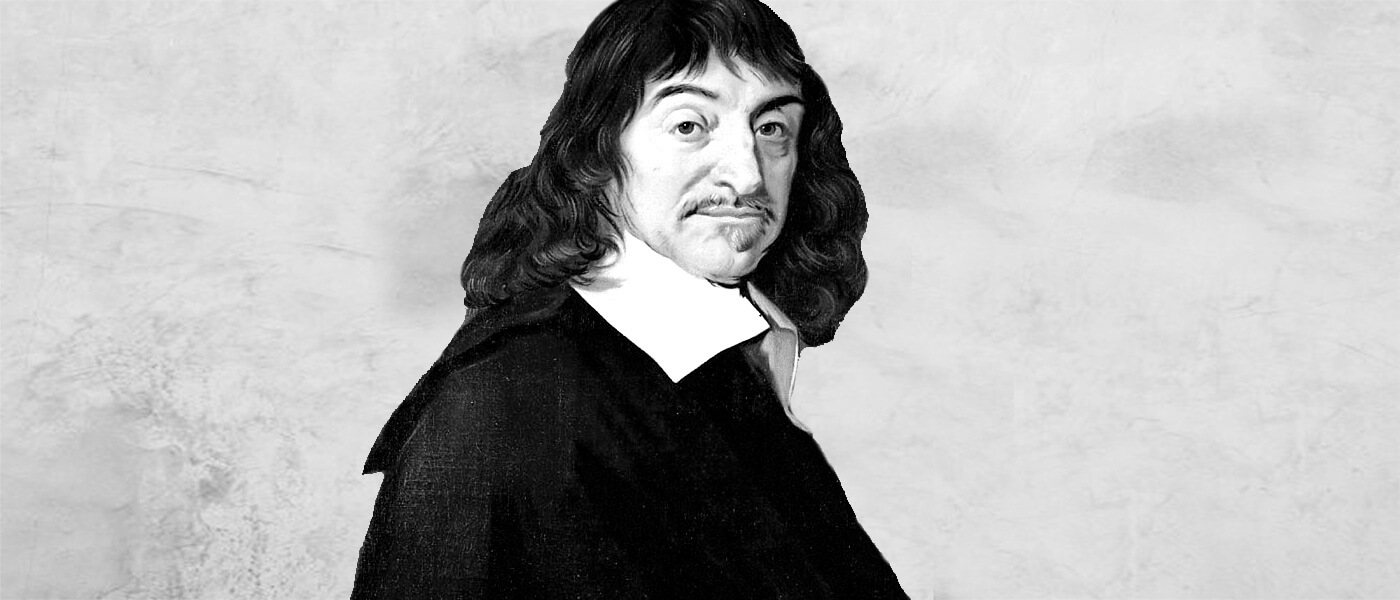In the court of public opinion, consistency matters most

In the court of public opinion, consistency matters most
Opinion + AnalysisBusiness + Leadership
BY The Ethics Alliance The Ethics Centre 13 NOV 2017
If you’re like us, you spend a lot of time reading the business news. And you’re be familiar with a strange paradox: while some highly respected business leaders can be brought to their knees by one poor decision or ethical stumble, there are others that seem to get away with it time after time. In the language of the CBD, they’re Teflon-coated.
It hardly seems fair that those who have spent their career doing the right thing attract more criticism when they fail. But it seems there is nothing the public hates more than a hypocrite.
Psychologist Dr. Melissa Wheeler says hypocrisy is often considered a bigger sin than the transgression itself.
“The thing that really gets people’s attention is someone’s moral hypocrisy – when you say something, but do something very differently. Or you condemn something, but then have been found to be doing it as well”, says Wheeler, who has a PhD in moral and social psychology and is a Research Fellow in the Department of Management and Marketing at the University of Melbourne.
Cyclist Lance Armstrong is therefore judged more harshly because he was a healthy-life champion who was doping himself throughout a career, which included winning seven Tour de France events.
“The thing that really gets people’s attention is someone’s moral hypocrisy – when you say something, but do something very differently.”
Conversely, we shrug off US President Donald Trump’s Twitter diatribes and troublesome behaviour because they’re generally consistent with his career and private life over the decades.
“With Trump, I keep wondering why people aren’t more outraged and shocked at all the things that are coming out, scandal after scandal, and why are people not even batting an eye anymore”, says Wheeler.
“And I think it is because we have come to expect that from him, because it conforms with what you are expecting and it conforms with your stereotype of what he, as a politician, is.”
Surprise makes a scandal ‘stick’
Mud seems to “stick” if someone does the unexpected or flouts their own stereotype, she says.
In the corporate world, Volkswagen’s falsification of its vehicle emissions data became one of the biggest scandals of 2015. It was trading on its “green” credentials, but was lying about its performance.
Organisations cannot even expect that their good record will help insulate them from future mistakes.
“If you do anything to fall from that grace, it is going to be worse”, says Wheeler.
In fact, not only can “good-practise champions” attract more criticism when they fail, they can also draw more scrutiny in the first place, according to the managing director of the Australian Centre for Corporate Social Responsibility, Dr Leeora Black.
“Paradoxically, sometimes companies with stated good intentions are targeted [by activists] more frequently than companies without, simply because they are more likely to respond.”
Black, an advisor with a PhD in Corporate Social Responsibility, says change campaigners will target companies that already have expressed a commitment to be socially responsible. “They know they will get more traction from those companies than companies that don’t care.”
“Paradoxically, sometimes companies with stated good intentions are targeted more frequently than companies without, simply because they are more likely to respond.”
Activists target companies they can change
Public opinion and media coverage often follow the activists, which goes some way towards explaining why socially responsible companies get more flak for their ethical breaches, she says.
“Normally, without that targeting by activists, if a company is doing well and it stumbles, stakeholders are more likely to give it the benefit of the doubt.”
“Many people have spoken to me about this [phenomenon] in their companies, particularly in the early days, when they get started. Normally, companies that are further advanced in their corporate responsibility journey become more resilient and they also develop stronger relationships with stakeholders and so they are much less likely to suffer that kind of backlash when they do slip”, says Black.
“It is the companies that are newer to CSR that are more likely to get targeted and may be more concerned about it.”
However, fears of harsh judgement should not be a disincentive to hold and display high ethical standards. The business case of corporate social responsibility (CSR) is that the “benefits outweigh the troubles”, she says.
“And the troubles are short term and the benefits are long term.”
Black says the benefits of CSR are better employee attraction and retention, higher employee productivity and organisational commitment.
“For companies listed on the stock exchange, over time, their better performance will be rewarded by shareholders. There is also the opportunity for enhanced risk identification and management, enhanced innovation and improved reputation”, she says.
“But it does take consistency and persistency. You don’t just do one good thing and expect everybody to fall all over the place, gobsmacked about how wonderful your company is. That doesn’t cut it. That is the kind of thing that is more likely to be viewed as hypocrisy.
“Where there are systemic, fundamental, deep-seated commitments being made by the company that are being expressed in its culture and its strategy, then, over time, the persistence and the consistency will be rewarded and the company will become much more resilient to shocks that may happen from an occasional stumble.”
Scandal recovery depends on response
Wheeler says once a scandal has broken, an organisation’s ability to recover will depend on how it handles the aftermath and whether it uses it as an opportunity to grow.
Effective responses include taking responsibility, working around the facts of the transgression, not sweeping it under the rug and providing appropriate explanations for the wrongdoing.
“I think there is a real sincerity in that. So, it is not just like trying to weasel out of the blame.
“And then people like to see that the companies are willing to accept and serve what might be considered an equitable punishment. They want to see there is some punishment for the action and some consistent internal changes – what sort of rehabilitation are they doing?”
University of Pittsburgh researchers studied 100,000 social media tweets to see how the tenor of the public discussion changed in the weeks following Volkswagen’s emissions data scandal.
A sentiment analysis over four separate weeks showed how criticism of the company abated once Volkswagen and the regulators took action.
“Ultimately, if the company’s efforts at recovery are successful, the sentiment returns to a neutral state”
Sentiment about the brand was extremely negative immediately after the news broke, but shifted once the company started recovery efforts (such as an apology and recall) and regulatory agencies placed responsibility with the company.
“Ultimately, if the company’s efforts at recovery are successful, the sentiment returns to a neutral state”, says the study’s lead author, Vanitha Swaminathan, Thomas Marshall Professor of Marketing at the Katz Graduate School of Business at the University of Pittsburgh.
Learning from the experience
The damage to Volkswagen included a plunge in their stock price, government investigations in North America, Europe and Asia, the CEO’s resignation, the suspension of other executives, the company’s 2015 record loss, and a tab estimated at more than $US19 billion to rectify the issues, according to American economist, Boris Groysberg, in the Harvard Business Review.
There are also expected to be long term impacts on the careers of Volkswagen employees. “Our research shows that executives with scandal-tainted companies on their résumés pay a penalty on the job market, even if they clearly had nothing to do with the trouble”, says Groysberg.
“Overall, these executives are paid nearly 4 per cent less than their peers. Given that initial compensation in a job strongly affects future compensation, the difference can become truly significant over a career.
Good news for those who have slipped up is that surviving a scandal can result in a stronger operating performance in the long term – if the organisation has learned from the experience, ejected the wrongdoers and put into place measures to avoid a recurrence.
Researchers at the University of Sussex studied 80 corporate scandals and discovered that although share prices plummeted by between 6.5 and 9.5 per cent in the month after the bad headlines started, the experience could lead to improved performance in the long term. The scandals included breach of contract, bribery, conflicts of interest, fraud, price fixing and other white-collar crimes, as well as personal scandals such as a CEO having an affair, lies on CVs and harassment cases.
Dr Surendranath Jory, who led the study, said safeguards put into place to protect against further abuses seemed to allay investor fears and avoid further drops in a company’s stock price, ensuring they rebound to the levels of their rivals. “Three years on from scandals, the share price performance of firms matched those that had not been affected by scandals.
“Clearly, investors value ethics and they place a premium on it.”
Follow The Ethics Centre on Twitter, Facebook, Instagram and LinkedIn.

This article was originally written for The Ethics Alliance. Find out more about this corporate membership program. Already a member? Log in to the membership portal for more content and tools here.
Ethics in your inbox.
Get the latest inspiration, intelligence, events & more.
By signing up you agree to our privacy policy
You might be interested in…
Big thinker
Business + Leadership
Big Thinker: Karl Marx
Opinion + Analysis
Business + Leadership
David Gonski on corporate responsibility
Opinion + Analysis
Business + Leadership
Is employee surveillance creepy or clever?
Opinion + Analysis
Business + Leadership
Susan Lloyd-Hurwitz on diversity and urban sustainability
BY The Ethics Alliance
The Ethics Alliance is a community of organisations sharing insights and learning together, to find a better way of doing business. The Alliance is an initiative of The Ethics Centre.
BY The Ethics Centre
The Ethics Centre is a not-for-profit organisation developing innovative programs, services and experiences, designed to bring ethics to the centre of professional and personal life.
The pivot: Mopping up after a boss from hell

The pivot: Mopping up after a boss from hell
Opinion + AnalysisBusiness + LeadershipRelationships
BY Rhonda Brighton Hall The Ethics Centre 10 OCT 2017
How would you feel if you had been harassed on an internet dating site and blocked the person, only to turn up for a new job and find out that they’re your boss?
It gets worse. The harassment continued outside of work and then the new boss started “performance managing” the employee out of the business, making complaints about the quality of their work.
This actually happened and I found out about it when the mother of the victim phoned me (as a HR executive) to say, “This is what happened to my son in your business”.
The young man, who we shall call Darren, had been an ambitious high performer. But, after a 12-week period with his new boss, he resigned – blowing up his career to escape the situation.
Now, he was seriously depressed, could not get out of bed and his mother was very concerned about his mental wellbeing.
There was some conjecture it may not have been a coincidence that the harasser had turned up as his boss. He may have deliberately sought to connect with his new team outside work before starting in the job.
The path forward was not totally clear. Darren had not made a complaint himself. It was his mother who made the call and supplied me with screenshots of text messages, without Darren’s consent.
He had also already left the company, but was obviously in a very bad space. Also, if he had resigned because of the harassment, it could potentially be regarded as “constructive dismissal” (an unlawful termination of employment).
And I now had someone working in the business who had apparently been a harasser on social media and had forced his victim out of his job. You don’t want a leader who performance manages people who won’t date them, or even someone who allows that perception to take hold.
It had to be investigated because, if it was true, I couldn’t just leave it as a time bomb waiting for the next person to attract his interest.
My legal and moral obligations were not necessarily the same. I had to respond to the situation as both a HR person and a leader, because I had executive responsibility for the part of the business they both worked in.
From a moral perspective, I had to consider whether my response was an almost parental reaction. Had I wanted to protect an employee who I discovered had been harassed out of his job because a complaint came from his mother?
It was a tricky situation, but we went through a quiet investigative process. I contacted Darren and he didn’t want to come back to the company.
The really important lesson in dealing with cases such as these is to discuss the human impact at the same time that you are discussing the legalities. They need to come together, they can’t be separated.
I arranged for better support and counselling for him. That was a risk because, in a court case, it could have been construed as an admission of responsibility and it could have gone on to become a Workers’ Compensation or Human Rights Discrimination issue.
But there must be a degree of humanity – you can’t just leave someone broken and walk on by.
When I called his former boss into an interview, he became very angry. He said his activity on the dating site was his private life and none of our business.
A mature leader would have disclosed the conflict in their relationship as soon as they started at the company, so that it could be managed ethically. Instead, he went for Darren, hammer and tongs with the performance issue.
We disciplined him and he ended up resigning shortly afterwards of his own free will.
The really important lesson in dealing with cases such as these is to discuss the human impact at the same time that you are discussing the legalities. They need to come together, they can’t be separated.
It is also important to deal quickly with these things because nothing gets better if it festers away. If I look at the really bad cases I have mopped up, there have been a lack of investigative outcomes, a lack of definitive decisions and/or lack of clarity about what will be done.
Some of these cases drag on for years and someone leaves the workforce, broken. They progressively end up in really bad financial shape as well. Time stands still for them because they are either coming into a workplace where someone is continuing to harass them or they are isolated at home. While you’re deciding what to do, the issue is overwhelming their every day.

This article was originally written for The Ethics Alliance. Find out more about this corporate membership program. Already a member? Log in to the membership portal for more content and tools here.
Ethics in your inbox.
Get the latest inspiration, intelligence, events & more.
By signing up you agree to our privacy policy
You might be interested in…
Explainer
Relationships
Ethics Explainer: Respect
Opinion + Analysis
Relationships, Society + Culture
The self and the other: Squid Game’s ultimate choice
Opinion + Analysis
Business + Leadership
Self-interest versus public good: The untold damage the PwC scandal has done to the professions
Opinion + Analysis
Business + Leadership, Health + Wellbeing
The super loophole being exploited by the gig economy
BY Rhonda Brighton Hall
Rhonda Brighton-Hall is a non-executive director of the Australian Human Resources Institute and founder of MWAH (Make Work Absolutely Human), Chair of FlexCareers, Former Telstra Business Woman of the Year and HR Leader of the Year.
BY The Ethics Centre
The Ethics Centre is a not-for-profit organisation developing innovative programs, services and experiences, designed to bring ethics to the centre of professional and personal life.
10 films to make you highbrow this summer
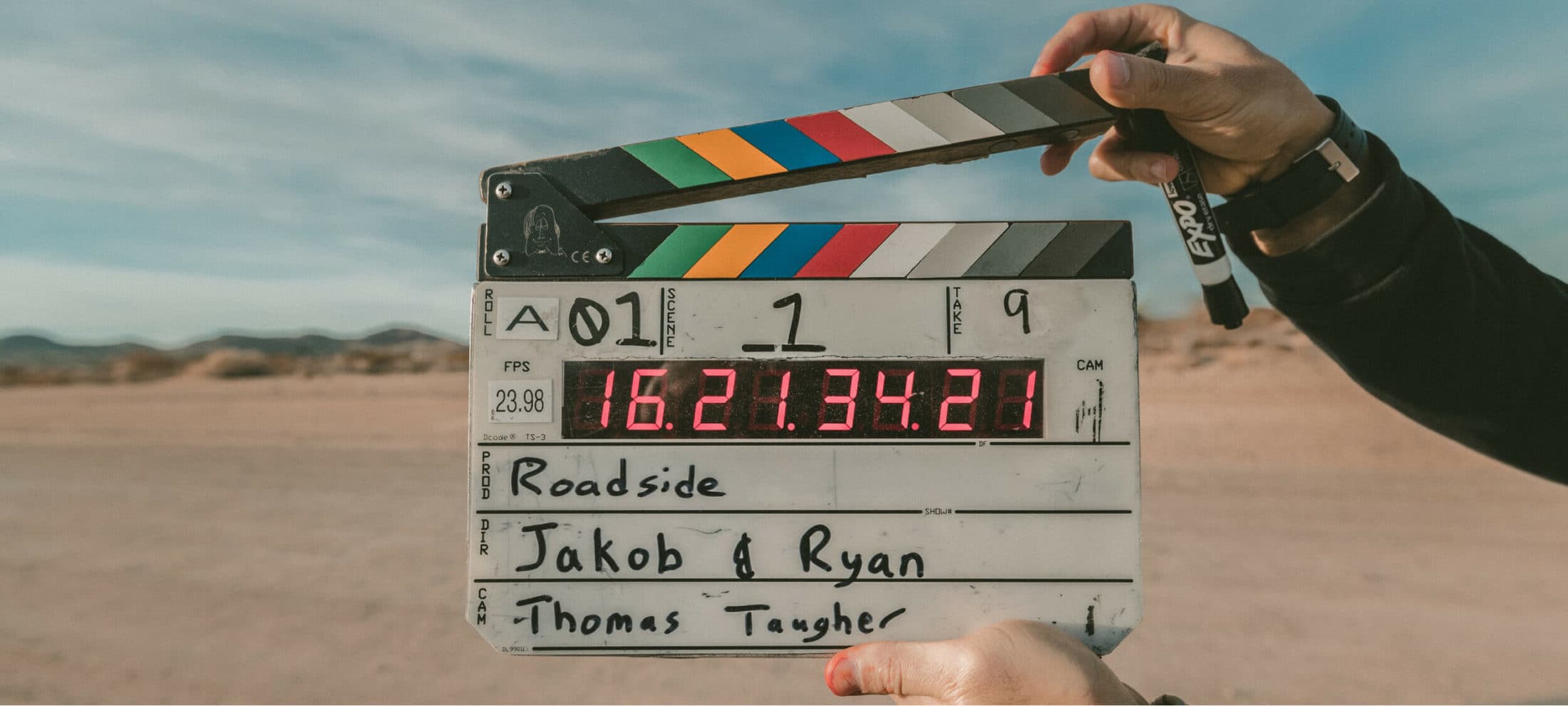
10 films to make you highbrow this summer
Opinion + AnalysisSociety + Culture
BY The Ethics Centre 7 SEP 2017
It’s not a waste of time if it’s about philosophy, right? Here are The Ethics Centre’s top 10 non-blockbuster picks for you to sit back, relax and imbibe on your holiday.
1. Examined Life
This philosophy fan’s wet dream brings heavyweights like Judith Butler, Slavoj Žižek and Cornell West together. The doco takes philosophy out of academia and onto the streets.
2. American Anarchist
There’s no putting the genie back into this bottle. A 66 year old teacher of special needs children grapples with the violent reach of the bomb manual he wrote at age 19.
3. Kedi
Filmed at whisker-height, this documentary-cum-urban love letter to Turkey’s stray cats is a lyrical and surprisingly philosophical tribute to the healing power of pets. Meow!
4. Alice
We dare you to look away from one frame of this Czech stop motion! Dissatisfied with the fairy tale film versions of Lewis Carroll’s Alice in Wonderland, the creator made this dreamlike visual spectacular.
5. Taste of Cherry
A haggard man trawling Tehran looking for someone to help bury him after he takes his own life finds different meditations on life, God, and the taste of cherry. Don’t judge it by its trailer!
6. In the Mood for Love
A lush and delicate tragedy of restraint. Two neighbours, heartbroken by their adulterous spouses, fall in love with each other.
7. A Serious Man
A troubled man seeks the advice of three wildly differing rabbis in this modern take on the Book of Job. Another quirky Coen Brothers film. What is the meaning of life?
8.Never Let Me Go
In a harrowing sci-fi dystopia, an idyllic town gives children a perfect childhood to prepare for a short-lived future as organ donors. Makes you think about farm animals in a new light.
9. The Wind Will Carry Us
A busy filmmaker set to capture the obscure, ancient burial ceremony of a 100 year old Kurdish woman is disappointed when she takes longer to die than expected.
10. Like Father, Like Son
This Japanese film transforms the typically sensationalist story of children switched at birth into a gentle and composed musing on the bonds that create families – and how we break them.
Ethics in your inbox.
Get the latest inspiration, intelligence, events & more.
By signing up you agree to our privacy policy
You might be interested in…
Opinion + Analysis
Society + Culture, Politics + Human Rights
Taking the cynicism out of criticism: Why media needs real critique
Opinion + Analysis
Relationships, Society + Culture
I’d like to talk to you: ‘The Rehearsal’ and the impossibility of planning for the right thing
Opinion + Analysis
Society + Culture
FODI digital returns for three dangerous conversations
Opinion + Analysis
Society + Culture
11 books, films and series on the ethics of wealth and power
BY The Ethics Centre
The Ethics Centre is a not-for-profit organisation developing innovative programs, services and experiences, designed to bring ethics to the centre of professional and personal life.
Assisted dying: 5 things to think about

Assisted dying: 5 things to think about
Opinion + AnalysisPolitics + Human RightsRelationships
BY The Ethics Centre 24 AUG 2017
Making sense of our lives means thinking about death. Some philosophers, like Martin Heidegger and Albert Camus, thought death was a crucial, defining aspect of our humanity.
Camus went so far as to say considering whether to kill oneself was the only real philosophical question.
What these philosophers understood was that the philosophical dream of living a meaningful life includes the question of what a meaningful death looks like, too. More deeply, they encourage us to see that life and death aren’t opposed to one another: dying is a part of life. After all, we’re still alive when we’re dying so how we die impacts how we live.
The Ethics Centre was invited to make a submission to the NSW Parliamentary Group on Assisted Dying regarding a draft bill the parliament will debate soon. The questions we raised were in the spirit of connecting the good life to a good death.
Simon Longstaff, director of the Centre and author of the submission, writes, “It is not the role of The Ethics Centre to prescribe how people ought to decide and act. Our task is a more modest one – to set out some of the ethical considerations a person might wish to take into account when forming a view.”
Here are some of the key issues we explored, which are relevant to any discussion of assisted dying, not just the NSW Bill.
Does a good life involve suffering?
The most common justification for assisted dying or euthanasia is to alleviate unbearable suffering. This is based in a fairly universal sentiment. Longstaff writes, “To our knowledge, there is no religion, philosophical tradition or culture that prizes suffering … as an intrinsic good”.
Good things can come as a result of suffering. For example, you might develop perseverance or be supported by family. But the suffering itself is still bad. This, Longstaff argues, means “suffering is generally an evil to be avoided”.
There are two things to keep in mind here.
First, not all pain is suffering. Suffering is a product of the way we interpret ourselves and the world around us. Whether pain causes suffering depends on our response: It’s a subjective experience. Nobody but the sufferer can really determine the extent of their suffering. Recognising this could suggest a patient’s self-determination is crucial to decisions around assisted dying.
Second, just because suffering is generally a bad thing doesn’t mean that anything aiming to avoid it is good. We can agree that the goal of reducing suffering is probably good but still need to interrogate whether the method we’ve chosen to reduce suffering is itself ethical.
The connection between a good death and a good life
There’s not always a solution to suffering, no matter what anecdote you try, whether it be medicine, psychology, religion or philosophy. Sometimes suffering stays a while.
When there is no avenue to alleviate someone’s pain and anguish, Longstaff suggests “life can be experienced … as nothing more than an unrelenting and extra-ordinary burden”.
This is the context in which we should consider whether to help someone to end their lives or not. Although many faiths and beliefs affirm the importance and sacredness of life, if we’re thinking about a good, meaningful life, we need to pay some attention to whether life is actually of any value to the person living it. As Longstaff writes, “To say that life has value regardless of the conditions of a person’s existence may justify the continuation or glorification of lives that could be best described as a ‘living hell’”.
He continues, “To cause such a state would be indefensible. To allow it to persist without available relief is to act without mercy or compassion. To set aside those virtues is to deny what is best in our form of being.”
A responsible person should have autonomy over their death
Most people think it’s important for adults to be held responsible for their actions. Philosophers think this is a product of autonomy – the ability for people to determine the course of their own actions and lives.
Some philosophers think autonomy has an intrinsic connection to dignity. What makes humans special is their ability to make free choices and decisions. What’s more, we usually think it’s wrong to do things that undermine the free, autonomous choices of another person.
If we see death as a part of life, not distinct from it, it seems like we should allow – even expect – people to be responsible for their deaths. As Longstaff writes, “since dying is a part of life, the choices people make about the manner of their dying are central considerations in taking full responsibility for their lives”.
The role of the terminal disease
Some proposed laws, like the draft NSW Bill, suggest a person can seek to end their own life when their terminal disease causes them unbearable suffering. So, if you’re dying of lung cancer, you can only end your life if the cancer itself is causing you unbearable pain. It is necessary to consider if assisted dying be restricted in this way.
Imagine you’ve got a month to live and the only thing that gives you meaning is your ability to go outside and watch the sunrise. One day, you break your leg and are bedridden. Should you now be forced to live for a month in a state you find agonising and meaningless because your broken leg isn’t what’s killing you?
Longstaff argues, “If severe pain and suffering are essential criteria for being eligible for assistance, then on the basis that like cases should be treated in a like manner, assistance should be offered to a person who meets all the other specified criteria – even if their pain and suffering is not caused by their illness”.
Who is eligible for assisted dying?
Many laws try to carve out special categories of people who are and aren’t eligible to request assisted dying. They might do so on the basis of life expectancy, whether the illness is terminal or the age of the patient.
In determining who should be eligible, two principles are worth thinking about.
First, the principle of just access to medical care. Most bioethicists agree before we can figure out who receives medical treatment, we need to have a broader idea of what justice looks like.
Some think justice means people get what they need. For these people, granting medical care is based on how urgently it’s required. Others think justice means getting the best outcome. These people think we should distribute medicine in a way that creates the most quality of life for patients.
Depending on how we view justice, we’ll have different views on who is eligible for assisted dying. Is it those whose quality of life is lowest? If so, it might not be terminal cases in need of treatment. Is it those who are most in need of treatment? This might include young children who many people are reluctant to provide assisted dying to. Until we’re clear on this principle, it’ll be hard to decide who is eligible and who is not.
The second principle worth thinking about is to treat like cases alike. This idea comes from the legal philosopher HLA Hart. He thought it was essential for ethical and legal distinctions to be made on the basis of good reasons, not arbitrary measures. A good example is if two people committed the same crime, they should receive the same penalty. The only reason for not treating them the same is if there is relevant difference in the two cases.
This is important to think about in terms of strict eligibility criteria. Let’s say we reserve assisted dying for people over 25 years old, which the NSW draft Bill does. Hart would encourage us to wonder, as Longstaff noted in The Ethics Centre’s submission, “what ethically significant difference lies between a 24-year-old with six months to live and who wishes to receive assisted dying and a 25-year-old in the same condition?”
Ethics in your inbox.
Get the latest inspiration, intelligence, events & more.
By signing up you agree to our privacy policy
You might be interested in…
Opinion + Analysis
Relationships, Society + Culture
Violence and technology: a shared fate
Opinion + Analysis
Relationships, Society + Culture
How can you love someone you don’t know? ‘Swarm’ and the price of obsession
Opinion + Analysis
Business + Leadership, Politics + Human Rights
No justice, no peace in healing Trump’s America
Opinion + Analysis
Relationships
Freedom and disagreement: How we move forward
BY The Ethics Centre
The Ethics Centre is a not-for-profit organisation developing innovative programs, services and experiences, designed to bring ethics to the centre of professional and personal life.
The 6 ways corporate values fail

The 6 ways corporate values fail
Opinion + AnalysisBusiness + Leadership
BY The Ethics Centre 14 AUG 2017
The Ethics Centre works with companies and organisations of all shapes and sizes. We know how different a bank with 40,000 employees is to a small non-profit or a university, or even to a division of the military. Despite that, the same issues arise in business time and again. A failure to live up to corporate values.
One of the first things we do when we start working with an organisation is helping them to define, refine, or re-build their purpose, values, and principles – what we would call an ethical framework. A strong ethical framework is a North Star for all people and all decisions within an organisation.
We frequently encounter companies that have values in place – but they’re not being “lived.” They’re either entirely unknown, or else they are not being used as a reference point. Rarely are they being used to their full potential.
In the course of our work, we’ve uncovered six main ways that corporate values fail to stick.
-
Values without purpose or principles
We often encounter a lack of understanding of the way that values, principles and purpose inter-relate. They are fundamentally different and they work best together. Purpose is your “why” (Why does your organisation exist?). Values describe what is good. Principles describe what is right. When making a decision we must ask:
- Does this decision help us achieve our purpose?
- Are we upholding our values in this decision? Is this what we consider to be good?
- Is this decision aligned with what we consider to be right? Is it the right thing to do?
The point about all of this is that we are required to think before we act. Without an ethical framework of purpose, values, and principles, we are left with nothing but a list of rules and behavioural directives. And when we are simply following rules or habits, the critical thinking needed for ethical decision making is removed.
-
Leaders failing to lead on values
Ethical frameworks don’t have to start with the CEO or board. It’s been our experience that the best frameworks arise out of consultation with all levels of the organisation. But it is certainly true that it’s the job of all leaders to talk about the values, create a narrative that demonstrates true commitment, and exemplify them in their own behaviour.
This is partly a communication challenge: leaders have to explain the values and tell the story of how they are lived within the organisation. They need to explain how their decisions reflect the values.
But it’s also important the organisation and its stakeholders can see the values being applied constantly and consistently. When leaders fail to do this, the hypocrisy will be noticed and called out – often with disastrous and costly consequences. Hypocrisy over values can destroy the credibility an organisation.
-
Designing for a marketing purpose
No offence to marketers, but they definitely shouldn’t be the sole drivers of your ethical framework. In this scenario, the marketing team have identified the need to communicate a particular set of “brand values” to their customers, so they craft uplifting slogans that give the appearance of an ethical framework. Sadly, these values are a facade. They are window dressing designed to sell a product. Managers and staff either don’t know them, can’t relate to them, or don’t know how to use them in decisions.
-
Confusing values with behaviours
The danger of HR being the sole architects of your ethical framework is that they will probably build something based on behaviours. Behaviour-based statements tend to describe the desired “good” behaviours and call out the undesirable “bad” ones. They are displayed in posters on the kitchen wall – and the only time they are really discussed is in performance reviews, where they become a stage-gate for a bonus. The employees may find the behaviours helpful in interacting with colleagues within and across teams, but they won’t be very helpful when applied to the big day to day decisions.
-
Values not embedded within your systems and processes
The beauty of an ethical framework is that it can help guide every decision that your managers make. This includes major corporate manoeuvres and daily interactions with customers and other stakeholders. But this will only work if your values and principles are embedded in your policies, systems, and processes.
It’s easy for these frameworks to become misaligned. If you uphold corporate values like trust, integrity, and customer service whilst imposing ambitious KPIs that prioritise profit growth above all else, then you will have a confused workforce with no idea what to do. When systems are in conflict with values, bad decisions can be made by well-meaning people.
-
People failing to talk about corporate values
You can tell a purpose-led organisation from any other because their values and principles are on display, every day. They’re not just a page on the website, but the subject of daily conversation. They come up time and again in company presentations, in meetings and in micro-interactions. In times of change or disruption, they’re the only way to navigate successfully.
Your people need not only to know what the values are and what they mean; they also need to understand how to communicate with them and apply them to everyday decisions. And perhaps most importantly, you need to foster a culture in which a failure to live the values is explicitly called out. You know a company truly has a strong ethical framework when even the most powerful executive is held to account for not living the values.
Corporate values are much more than mere slogans or behaviours. They are an important and fundamental element in decision making. Organisations are shaped by the choices their individual employees and directors make. And this in itself shapes the world around us.
A famous Australian corporate leader once said that companies are successful when they “make more good choices than bad choices.” If values represent what is good then we know where to look to shape good choices.
Ethics in your inbox.
Get the latest inspiration, intelligence, events & more.
By signing up you agree to our privacy policy
You might be interested in…
Opinion + Analysis
Business + Leadership, Relationships
There’s no good reason to keep women off the front lines
Opinion + Analysis
Business + Leadership, Science + Technology
Meet Aubrey Blanche: Shaping the future of responsible leadership
Opinion + Analysis
Business + Leadership, Science + Technology
MIT Media Lab: look at the money and morality behind the machine
Opinion + Analysis
Business + Leadership, Politics + Human Rights
Berejiklian Conflict
BY The Ethics Centre
The Ethics Centre is a not-for-profit organisation developing innovative programs, services and experiences, designed to bring ethics to the centre of professional and personal life.
The rise of Artificial Intelligence and its impact on our future

The rise of Artificial Intelligence and its impact on our future
Opinion + AnalysisScience + Technology
BY Simon Longstaff The Ethics Centre 28 JUL 2017
It’s all fun and games until robots actually take over our jobs. AI is in our future and is fast approaching. Simon Longstaff considers how we make that tomorrow good.
Way back in 1950, the great computer scientist, Alan Turing, published in Mind a paper that set a test for determining whether or not a machine possesses ‘artificial intelligence’.
In essence, the Turing Test is passed if a human communicating with others by text cannot tell the difference between a human response and one produced by the machine. The important thing to note about Turing’s test is that he does not try to prove whether or not machines can ‘think’ as humans do – just whether or not they can successfully imitate the outcomes of human thinking.
Although the makers of a chat-bot called Eugene Goostman claimed it passed the test (by masquerading as a 13 year old boy) general opinion is the bot was designed to ‘game’ the system by using the boy’s apparent young age as a plausible excuse for the mistakes it made in the course of the test. Even so, the development of computers continues apace – with ‘expert systems’ and robots predicted to displace humans in a variety of occupations ranging from the legal profession to taxi drivers and miners.
All of this is causing considerable anxiety – not unlike that felt by people whose lives were upended by the development of steam power and mass production during the first Industrial Revolution. Back then people could more or less understand what was going on. The machines (and how they worked) were fairly obvious.
These days the inner workings of our advanced machines are far more mysterious. Coal or timber burning in a furnace is tactile and observable. But what exactly is an electron? How do you see it? And a Q-bit?
Add to this the extraordinary power of modern machines and it is not surprising that some people (including the likes of Stephen Hawking) are expressing caution about the potential threat our own technologies present, not only to our lifestyles, but to human existence. Of course, not everybody is so pessimistic.
However, the key thing to note here is we have choices to make about how we develop our technology. The future is not inevitable – we make it. And that is where ethics comes in.
This is one small example of how our choices matter. At first glance, let’s imagine how wonderful it would be if we could build batteries that never need recharging. That might seem to solve a raft of problems.
However, as Raja Jurdak and Brano Kusy observe in The Conversation, there may be ‘downsides’ to consider, “creating indefinitely powered devices that can sense, think, and act moves us closer to creating artificial life forms.
Couple that with an ability to reproduce through 3D printing, for example, and to learn their own program code, and you get most of the essential components for creating a self-sustaining species of machines.” Dystopian images of the Terminator come to mind.
However, back to Turing and his test. As noted above, computers that pass his test will not necessarily be thinking. Instead, they will be imitating what it means to be a thinking human being. This may be a crucial difference.
What will we make of a medi-bot that tells us we have cancer and tries to comfort us – but that we know can have no authentic sense of its (or our) mortality? No matter how good it is at imitating sympathy, won’t the machine’s lack of genuine understanding and compassion lead us to discount the worth of its ‘support’?
Then there is the fundamental problem at the heart of the ethical life lived by human beings. Our form of being is endowed with the capacity to make conscious, ethical choices in conditions of fundamental uncertainty. It is our lot to be faced with genuine ethical dilemmas in which there is, in principle, no ‘right’ answer.
This is because values like truth and compassion can be held with equal ‘weight’ and yet pull us in opposite directions. As humans we know what it means to make a responsible decision – even in the face of such radical uncertainty. And we do it all the time.
What will a machine do when there is no right answer? Will it do the equivalent to flipping a coin? Will it be indifferent to the answer it gets and act on the results of chance alone? Will that ever be good enough for us and the world we inhabit?
Ethics in your inbox.
Get the latest inspiration, intelligence, events & more.
By signing up you agree to our privacy policy
You might be interested in…
Opinion + Analysis
Business + Leadership, Science + Technology
Is technology destroying your workplace culture?
Opinion + Analysis
Health + Wellbeing, Relationships, Science + Technology
When do we dumb down smart tech?
Opinion + Analysis
Health + Wellbeing, Science + Technology
Twitter made me do it!
Opinion + Analysis
Science + Technology
Bladerunner, Westworld and sexbot suffering
BY Simon Longstaff
Simon Longstaff began his working life on Groote Eylandt in the Northern Territory of Australia. He is proud of his kinship ties to the Anindilyakwa people. After a period studying law in Sydney and teaching in Tasmania, he pursued postgraduate studies as a Member of Magdalene College, Cambridge. In 1991, Simon commenced his work as the first Executive Director of The Ethics Centre. In 2013, he was made an officer of the Order of Australia (AO) for “distinguished service to the community through the promotion of ethical standards in governance and business, to improving corporate responsibility, and to philosophy.” Simon is an Adjunct Professor of the Australian Graduate School of Management at UNSW, a Fellow of CPA Australia, the Royal Society of NSW and the Australian Risk Policy Institute.
BY The Ethics Centre
The Ethics Centre is a not-for-profit organisation developing innovative programs, services and experiences, designed to bring ethics to the centre of professional and personal life.
The ethics of smacking children

The ethics of smacking children
Opinion + AnalysisHealth + WellbeingRelationships
BY Matthew Beard The Ethics Centre 20 JUL 2017
Every generation likes to reflect on the way they were disciplined. They’re like old war stories, told with the fondness that comes with time and age.
I do the same. I was smacked as a child. For a time, I was convinced my backside was made of something other than flesh, such was its power to shatter wooden spoons. Weirdly, it’s something of a point of pride these days.
When it comes to smacking, it’s not just nostalgic to reminisce like this. It shapes our thoughts about whether smacking is ethical or not. “I was smacked and I turned out fine, so it must be OK.”
But that’s bad logic. The argument is a logical fallacy called “survivorship bias”.
Survivorship bias happens when we focus on those who made it through a difficult process without considering those who didn’t. The logic of “I was smacked and turned out OK” is the same as “I was tortured and I turned out OK”, but the fact you survived it doesn’t make it ethical.
When thinking about smacking, we need some better arguments. Here are a few things to consider.
Smacking is a show of force
With the exception of the grumpy nun from The Blues Brothers known as The Penguin, smacking only works on children who are too small to defend themselves.
Acknowledging this power imbalance changes how some people feel about the act of smacking. Philosopher and parent Damon Young writes, “deliberately striking [kids], whether coolly or in a rage, takes advantage of their weakness”.
Young thinks this is a question of character, writing “I don’t want to be the kind of man who hurts a smaller, weaker person”. Do you want to be the kind of parent who relies on physical power to command discipline, respect or obedience from your child?
Political philosopher Niccolo Macchiavelli said it was “much safer to be feared than loved when one must be dispensed with”. He thought fear was the most effective way to prevent people from betraying you because it creates “a dread of punishment which never fails”.
But Machiavelli had despotic political leaders in mind, not parents.
Effectiveness and ethics aren’t the same
Let’s go back to Macchiavelli for a second. He wasn’t interested in how to rule ethically, he wanted to know how to rule effectively. Sometimes it’s tempting to approach parenting the same way.
‘What’s the best way to get my child to sleep?’ ‘How can I stop him from biting me?’ When we’re bleary-eyed and desperately Googling for answers at three in the morning, we’re looking for whatever will get us the result we want. The means are less important to us than the ends.
Desperation doesn’t make for good ethical judgement. Telling your bub bedtime stories about the monsters who eat naughty children until they’re sobbing in fear might be an effective way to get them to toe the line but it’s not going to win you any parenting awards.
Parenting expert Barbara Coloroso suggests a slight modification to the ‘if it works, do it’ mentality. She suggests, “if it works and leaves a child’s and my own dignity intact, do it”. This is a crucial distinction – the dignity of both children and parents serves as a line in the sand against brute efficiency.
This doesn’t necessarily rule smacking out. Pope Francis himself thought smacking could be a dignified way of teaching kids about ethics.
Talking about a dad who sometimes smacks his kids – but never in the face – the Pope said, “How beautiful. He knows the sense of dignity. He has to punish them but does it justly and moves on.”
As a counter example, it’s worth wondering how dignified the Pope would feel being bent over someone’s knee.
What are you really communicating?
Some people defend smacking as a way of communicating with a child when words won’t do the job. They suggest that in the midst of a meltdown, it’s hard to reason with a child, but if a quick ‘love tap’ gets them to listen to you, it might allow for a constructive conversation.
These folks might enjoy reading Hannah Arendt. The 20th century philosopher thought violence was an effective form of communication to help moderate, reasonable voices to be heard. However, Arendt’s support for violence comes with a warning: the use of violence risks its being legitimised as a form of communication in a community (or family). Once violence becomes the talk of the town, everyone can be tempted to start speaking it.
Arendt concluded, “the practice of violence, like all action, changes the world, but the most probable change is a more violent world”.
If the same is true of families, it might be worth thinking twice before talking with the hand.
Ethics in your inbox.
Get the latest inspiration, intelligence, events & more.
By signing up you agree to our privacy policy
You might be interested in…
Opinion + Analysis
Health + Wellbeing
The road back to the rust belt
Opinion + Analysis
Science + Technology, Relationships
Love and the machine
Opinion + Analysis
Relationships
Uncivil attention: The antidote to loneliness
Opinion + Analysis
Business + Leadership, Health + Wellbeing
Is your workplace turning into a cult?
BY Matthew Beard
Matt is a moral philosopher with a background in applied and military ethics. In 2016, Matt won the Australasian Association of Philosophy prize for media engagement. Formerly a fellow at The Ethics Centre, Matt is currently host on ABC’s Short & Curly podcast and the Vincent Fairfax Fellowship Program Director.
BY The Ethics Centre
The Ethics Centre is a not-for-profit organisation developing innovative programs, services and experiences, designed to bring ethics to the centre of professional and personal life.
Office flings and firings

Office flings and firings
Opinion + AnalysisBusiness + LeadershipHealth + WellbeingRelationships
BY Dennis Gentilin The Ethics Centre 20 JUL 2017
If you heard the phrase “cheaters never prosper” talked about at AFL headquarters, you’d assume they were talking about performance enhancing drugs, salary cap breaches or breaking the rules to win a game.
This week, as AFL CEO Gillon McLachlan announced the resignations of two senior officials, Richard Simkiss and Simon Lethlean, after they admitted to adulterous affairs with junior staff, the phrase took on a whole new meaning.
The reaction to McLachlan’s decision has been mixed. Some have applauded the move as a strong defence of the AFL’s culture and values. Others have suggested the AFL has gone too far. Writing in The Australian Financial Review, Josh Bornstein suggested office affairs that don’t involve “harassment or stalking or bullying” should “not be grounds for loss of employment”.
Particulars of the AFL case aside, this view is misguided. It conflates ethics and the law and demonstrates a lack of appreciation for the important role values and principles play in corporate governance. Just because something is legal doesn’t mean it’s ethical.
Yes, the law should play a role in guiding an organisation when developing an ethical framework. But it is far from sufficient. Arguably, the best test of an organisation’s ethics will arise when they’re operating in areas not covered by the law.
When a power imbalance could potentially cause harm to the more vulnerable party, then we have good reason to question that conduct.
With that said, what should we make of the AFL’s decision? When announcing the resignation of the two senior officials, McLachlan spoke to his organisation’s values. He stated that he would like to lead “a professional organisation based on integrity, respect, care for each other, and responsibility”.
An organisation’s values are affirmed by the actions, choices, and decisions that are made and condoned by its people, especially its most senior leaders. This also was not lost on McLachlan. “I expect that executives are role models and set a standard of behaviour for the rest of the organisation,” he said. “They are judged, as they should be, to a higher standard”.
The response by the Seven West Media board to revelations that their CEO Tim Worner had an adulterous affair with executive assistant Amber Harrison was a little more benign. They engaged a private law firm to undertake an independent investigation into a variety of allegations made by Harrison, including the inappropriate use of company funds and illicit drug use by Worner.
Although the findings of the investigation were not made public, the board concluded there was no evidence supporting the claims of wrongdoing by Worner. Furthermore, they stated he had been disciplined over his “personal and consensual” relationship with Harrison, which it also said was “inappropriate due to his senior position”.
So what are we to make of these seemingly contrasting responses? Should we cast judgement and declare that one organisation is more virtuous than the other?
We must be careful not to instantly assume that an individual who has become involved in an extra-marital affair is less committed to the organisation or its values. Infidelity is not a simple question of character deficiency.
It should be acknowledged that although the two organisations handled the incidents differently, neither condoned the conduct of the leaders involved. When judging the individuals and the organisation’s responses, commentators and the public appear to point to two factors.
The first is the power asymmetry between the people in each of the affairs. This is not unique. Power asymmetries in organisations are inescapable and almost all leaders have at some stage used their power to gain advantage, even if they did so unwittingly. However, when a power imbalance could potentially cause harm to the more vulnerable party then we have good reason to question that conduct.
The second factor inviting people’s judgement is the fact the affairs were adulterous. Understandably, infidelity arouses a range of moral responses. But we must be careful not to instantly assume that an individual who has become involved in an extra-marital affair is less committed to the organisation or its values. Infidelity is not a simple question of character deficiency.
Stories are powerful. After notable incidents like these, they become folklore within organisations.
Whenever a senior executive becomes involved in a regrettable or unsavoury incident similar to these, an employer has no choice but to respond. How they do so is a defining moment for the organisation. Their response (or lack thereof) reveals to us what the organisation really values and how committed it is to those values.
However, judging the appropriateness of the response is difficult. Perhaps the best measure is one we don’t yet have access. Namely, the stories that these events inspire within the organisation.
Stories are powerful. After notable incidents like these, they become folklore within organisations. If they affirm and are aligned to stated values and principles, they can strengthen the organisation’s ethical foundations. If not, people can quickly become cynical, compromising the organisation’s character.
When we look past the salacious gossip surrounding office romances, this is arguably the most important thing to take from these unfortunate incidents. For the sake of the boards at the AFL and Seven West Media, I hope that the stories being told within their organisations are reflective of the values they extol.
Ethics in your inbox.
Get the latest inspiration, intelligence, events & more.
By signing up you agree to our privacy policy
You might be interested in…
Opinion + Analysis
Relationships
Only love deserves loyalty, not countries or ideologies
Opinion + Analysis
Business + Leadership
Self-presentation with the collapse of the back and front stage
Opinion + Analysis
Business + Leadership
Doing good for the right reasons: AMP Capital’s ethical foundations
Opinion + Analysis
Business + Leadership
Survivor bias: Is hardship the only way to show dedication?
BY Dennis Gentilin
Dennis Gentilin is an Adjunct Fellow at Macquarie University and currently works in Deloitte’s Risk Advisory practice.
BY The Ethics Centre
The Ethics Centre is a not-for-profit organisation developing innovative programs, services and experiences, designed to bring ethics to the centre of professional and personal life.
Ethical dilemma: how important is the truth?
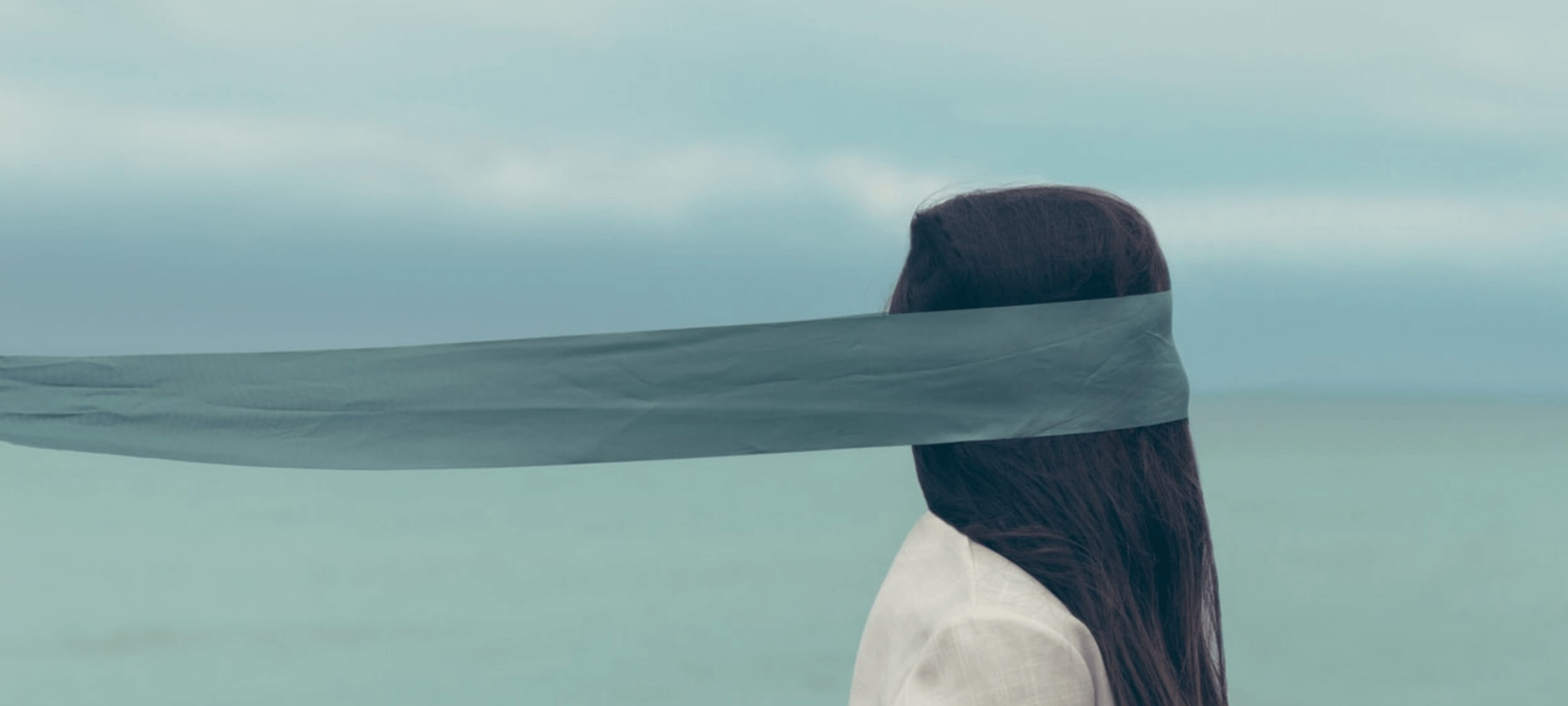
Ethical dilemma: how important is the truth?
Opinion + AnalysisRelationships
BY Matthew Beard The Ethics Centre 16 JUN 2017
Someone I know has just told me that the wife of a very good friend had an affair a few years ago.
The thing is that they seem very happy together, as do their children, and they are a solid family unit. The source of information is good, in that I can trust the person telling me, but he heard from someone else rather than ‘knowing’ for himself. What to do now that I have this information? Do I follow the lead to the original source to find out if it’s true? Do I confront my friend’s wife? Tell my friend? Forget about it altogether? If it isn’t true, I risk looking like an idiot; if it is, I risk breaking up a marriage and family. How important is the truth?
It’s tempting to say “this is none of your business – this is a matter for the person who had the affair to own up to”, but I’m not convinced by that. By saying nothing, you’re still making a decision to withhold potentially life-changing information from someone.
Let’s say that if your friend knew of the affair, they’d leave their wife, decide to stop sleeping with them or whatever. By withholding that information, you’re preventing them from making a choice they would otherwise make, which they have the right to make and which might be in their best interests. That’s a serious responsibility to take on, so you’d need to have pretty good reasons to justify saying nothing.
One such reason might be uncertainty. You say you’ve had this information given to you by a trustworthy source, but your source got that information as gossip. So, the question isn’t ‘can I trust my source?’; it’s ‘can I trust gossip?’
Your source might have good reasons to trust that gossip – you should ask what they are. If there aren’t any special circumstances, it’s hard to see on what basis you’d believe the allegations.
Now you’re wondering whether you need to investigate further. You’ve been told something but it’s an unreliable source – should you go out and find a more reliable source to make a decision one way or the other?
If you do decide to pursue the source further, it’s important you recognise exactly what that means. You’ve been told something is true, realised the source is unreliable and then decided it’s your job to try to find another source that proves it to be true. That’s not an impartial way to make the decision.
Most people would think if you only have one source of evidence for a claim and that evidence is bad, then you no longer have any reason to believe the claim. To keep looking for new evidence to prove the claim true is what psychologists call ‘confirmation bias’.
Still, if you have a close enough relationship to your friend you might be willing to fly in the face of reason and leave no stone unturned. But it would be wrong to say you’re obliged to investigate further: there’s just not enough evidence for that.
This article originally appeared in New Philosopher issue #17 on Communication.
Ethics in your inbox.
Get the latest inspiration, intelligence, events & more.
By signing up you agree to our privacy policy
You might be interested in…
Explainer
Politics + Human Rights, Relationships
Ethics Explainer: Autonomy
Opinion + Analysis
Relationships
If women won the battle of the sexes, who wins the war?
Opinion + Analysis
Business + Leadership, Climate + Environment, Relationships
ESG is not just about ticking boxes, it’s about earning the public’s trust
Big thinker
Relationships
Big Thinker: René Descartes
BY Matthew Beard
Matt is a moral philosopher with a background in applied and military ethics. In 2016, Matt won the Australasian Association of Philosophy prize for media engagement. Formerly a fellow at The Ethics Centre, Matt is currently host on ABC’s Short & Curly podcast and the Vincent Fairfax Fellowship Program Director.
BY The Ethics Centre
The Ethics Centre is a not-for-profit organisation developing innovative programs, services and experiences, designed to bring ethics to the centre of professional and personal life.
4 questions for an ethicist

4 questions for an ethicist
Opinion + AnalysisHealth + Wellbeing
BY John Neil The Ethics Centre 16 JUN 2017
Though not as common as GPs, therapists, or personal trainers, ethicists still have a lot to say about how to live a good life. Here are four of the common questions they get asked.
1. There are so many conflicting versions of ethics out there – legal, social, religious. Which should I listen to?
With all these voices vying for our attention it can be difficult to know who to listen to. An important starting point with ethics is to untangle the nature of these conflicting voices to better be able to hear our own.
Our beliefs and values are influenced by our upbringing, community, professions, and for many people, their faith. It’s useful to think of these voices – social customs, the law and religion – as ‘morality’ rather than ethics.
Morality is a set of deeply held and widely shared norms and rules within a community. Like ethics, morality provides us with opinions, rules, laws, and principles to guide our choices and actions. But unlike ethics, morality can be followed unthinkingly and without asking questions.
Ethics is about reflecting on who we are, what we value, and how we want to live in a world where many others may not share the same values and principles as us.
What makes ethics both timely and timeless is it arises in any moment when we find ourselves faced with the question of what is right. This question is both a philosophical and practical one. Philosophically, it involves exploring the nature of concepts like truth, wisdom, and belief and providing a justification for right and good actions.
On a practical level, it is a question we find ourselves asking every day. Whether it’s the big ethical issues – abortion, capital punishment, immigration – or everyday ethical questions – whether to tell the truth to a friend when it may hurt their feelings, or being asked to provide a reference for a close colleague who isn’t qualified for the job – ethical questions are inescapable parts of being human.
Ethics does not rely on history, tradition, religion, or the law to solely to define for us what is good or right. Ethics is about reflecting on who we are, what we care about, and how we want to live in a world where many others may not share the same values and principles as us.
2. Isn’t ethics just a matter of opinion? If there’s no way to tell who is right and who is wrong, isn’t my opinion as good as anyone’s?
In the 1990s Mike Godwin famously argued when it comes to online arguments, the longer and more heated a debate gets, the more likely somebody will bring up the Nazis in an attempt to close it down.
When it comes to discussions of ethics there is an inverse law which anyone who has taught an ethics class will have experienced. The shorter the conversation about ethics, the greater the likelihood somebody will claim, “Ethics is just personal opinion”.
When the stakes are high, it becomes abundantly clear that we want to hold others to a similar standard of what we think matters.
This view implies ethics is subjective. What follows from this is there are no better or worse opinions on ethics.
However, it would be hard to find someone say in response to being robbed, “The thief had their own values and I have mine, they are entitled to their view, so I won’t pursue this further”. When the stakes are high, it becomes abundantly clear we want to hold others to a similar standard of what we think matters.
We will inevitably reach a point in any discussion of ethics where people will strongly express a fundamental moral belief – for example, it’s wrong to steal, to lie or to harm others. These opinions are the beginning of a common, rational basis for discussions about what we should or shouldn’t do.
And when those discussions become heated, let’s try and leave Hitler out of it.
3. I’m a good person, why do I need ethics?
Ethics helps good people become better people.
Being a good person doesn’t necessarily mean you will always know what’s right. Good people disagree with each other about what is right all the time. And good people often don’t know what to do in difficult situations, especially when these situations involve ethical dilemmas.
We all have the tendency to act unethically given the ‘right’ conditions. Fear, guilt, stress, and anxiety have been shown to be significant factors that prevent us from acting ethically.
Good people make bad choices. Despite the widespread view that bad things happen due to a small percentage of so called ‘evil people’ intentionally doing the wrong thing, the reality is that all of us can make poor decisions.
We all have the tendency to act unethically given the ‘right’ conditions. Fear, guilt, stress and anxiety have been shown to be significant factors that prevent us acting ethically.
Food has been shown to directly influence the quality of decisions made by judges. Other studies have shown that even innocuous influences can have a disproportionate effect on our decisions. For example, smells affect the likelihood a person will help other people.
Ethics is not only about being aware of our values and principles. It is also about being alive to our limited view of the world and striving to expand our horizons by trying to better see the world as it really is.
4. People only do ethics when it makes them look good. Why would anyone put ethics above self-interest?
One argument often heard in philosophy and psychology is that everything we do, from the compassionate to the heroic, is ultimately done for our own benefit. When we boil it down, we only save lives, donate to charity or care for a friend because these things make us feel good or benefit us.
However, despite being a widely held view it is only half the story – and not even the most interesting part of the story. While human beings are undoubtedly self-interested there is a wealth of evidence that shows human beings are hard wired to care for others, including total strangers.
Research has shown the existence of ‘mirror neurons’ in our brains that naturally respond to other people’s feelings.
Ethics is rooted in this fundamental human capacity to be connected to others. It provides a rational foundation for this connection. This is the foundation of empathy. It’s an intrinsic part of what makes us human.
Ethics in your inbox.
Get the latest inspiration, intelligence, events & more.
By signing up you agree to our privacy policy
You might be interested in…
Opinion + Analysis
Society + Culture, Business + Leadership, Health + Wellbeing
Make an impact, or earn money? The ethics of the graduate job
Opinion + Analysis
Health + Wellbeing, Relationships
Seven COVID-friendly activities to slow the stress response
Opinion + Analysis
Health + Wellbeing, Relationships
Ageing well is the elephant in the room when it comes to aged care
Opinion + Analysis
Health + Wellbeing











